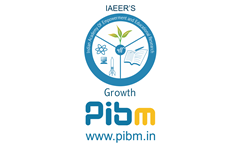
Top Trending Universities










Average Fees :
-
JNTU Hyderabad will release the TS EAMCET syllabus for 2022. The TS EAMCET syllabus has been simplified to all three disciplines - physics, chemistry, and mathematics (30 percent each). Candidates will be able to obtain the curriculum in pdf format before beginning their preparation. Candidates will be able to learn about the subject-specific themes and chapters from which questions will be asked in the exam by looking at the TS EAMCET syllabus. Questions from Mathematics, Physics, and Chemistry will be included in the TS EAMCET 2022 Engineering paper, whereas questions from Botany, Zoology, Chemistry, and Physics will be included in the TS EAMCET 2022 Agricultural exam.
The TS EAMCET 2022 syllabus includes 80 units of mathematics, 40 units of chemistry, and 40 units of physics (40). The TS EAMCET 2022 has a total of 160 points. The test is based on the Physics, Chemistry, and Mathematics syllabus for grades 11 and 12. The essential topics for each of the three subjects are listed below. Candidates can get the TS EAMCET curriculum in PDF format from the link below.
The following is the TS EAMCET Mathematics syllabus. These are merely the main themes on which the test will be based. Candidates should review the material and prepare for the exam ahead of time.
The Physics syllabus for the TS EAMCET is listed below. Candidates can review the themes and refer to sample papers and previous year examinations to better prepare. The following are the topics:
The question paper for the TS EAMCET Chemistry course had 40 questions. The main subjects are listed below.
This portion of the Agriculture test in the TS EAMCET 2022 comprises 40 questions. There is only one mark for each question, and there are no negative marks. The following topics were covered in the TS EAMCET Botany syllabus.
The Agriculture test included 40 questions from the following topics in the Zoology portion.
Let us look at the TS EAMCET curriculum weightage now that you have a good understanding of the TS EAMCET 2022 syllabus. This would have made it easier to rank issues in order of relevance. Knowing the importance of each topic might help you better organise your time. Without knowing how significant a topic is, students may devote far more time to it than is necessary, only to discover that it is not as important as it appears.
The table below shows the weighting of each chapter in the TS EAMCET for Mathematics.
| Chapters | Weightage |
|---|---|
| Differential calculus, Integral calculus | 3% |
| Calculus | 6% |
| Vectors | 10% |
| Probability | 15% |
The table below shows the weighting of each chapter in the TS EAMCET for Physics.
| chapters | Weightage |
|---|---|
| Physical World | 1% |
| Electromagnetic Waves, Magnetism and Matter, Units and Measurements, Kinetic Theory, Mechanical Properties of Solids, Atoms | 2% |
| Mechanical Properties of Fluids, Motion in a Straight Line, Semiconductor Electronics, Thermal Properties of Matter, Ray Optics and Optical Instruments, Waves Optics, Electric Charges and Fields, Electromagnetic Induction, Alternating Current, Dual Nature of Radiation and Matter, Nuclei, Communication Systems, | 3% |
| Current Electricity, Electrostatic Potential and Capacitance, Oscillations, Waves, Gravitation | 4% |
| Moving Charges and Magnetism, Motion in a Plane, Laws of Motion | 5% |
| Thermodynamics, Energy and Power, Work, System of Particles and Rotational Motion | 6% |
| Thermodynamics | 9% |
The table below shows the weightage of each chapter in the TS EAMCET for Chemistry.
| Chapters | Weightage |
|---|---|
| Mole concept, Measurements in Chemistry, Surface Chemistry, Coordination Compounds, Aromatic Compounds, Ethers, Phenols, Amines, Amino Acids and Proteins, Basic Concepts | 1% |
| Haloarenes, Haloalkanes (Alkyl halides), Alcohols, Aldehydes and Ketones, Carbohydrate, s- Block Elements (Alkali and Alkaline Earth Elements) | 2% |
| Carboxylic Acids, Polymers, Solid-state, Chemical Kinetics | 3% |
| Gaseous and Liquid States, Hydrocarbon, Thermodynamics | 4% |
| Classification of Elements and Periodicity in Properties | 5% |
| Solutions | 7% |
| Atomic structure and Chemical Bonding | 8% |
| p- Block Elements: Group 14, 15 and 17, d-Block Elements, Group 13, Group 18 and Group 17 | 9% |
